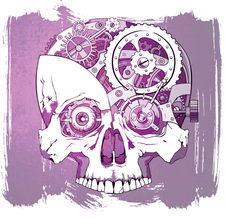Redis in-memory storage
Recollection

© Lead Image © redspruce,123RF.com
Include binary data and image files in your IoT projects with Redis, an open source, in-memory data structure store.
For many Internet of Things (IoT) projects, a message-queuing system like MQTT (message-queuing telemetry transport) is all you need to connect sensors, devices, and graphic interfaces. However, if you have requirements for high throughput or you are storing special data types (e.g., binary data or image files), you should take a look at Redis.
Redis (Remote directory server) [1] is an open source, in-memory data structure store that can be used as a database, cache, and message broker. It supports a wide range of data structures, such as strings, hashes, lists, sets, bitmaps, HyperLogLogs, and geospatial indexes. Redis servers can be loaded locally, or they are available as web-hosted solutions. Redis libraries are available for a wide variety of programming languages.
In this article, I show you how to set up a Redis system with two examples. The first is a flame scanner that connects an Arduino module to a Node-RED web dashboard. The second example is a Raspberry Pi weather station, in which a webcam image is stored in a Redis server and a PHP web page shows the data.
[...]
Buy this article as PDF
(incl. VAT)
Buy Linux Magazine
Subscribe to our Linux Newsletters
Find Linux and Open Source Jobs
Subscribe to our ADMIN Newsletters
Support Our Work
Linux Magazine content is made possible with support from readers like you. Please consider contributing when you’ve found an article to be beneficial.

News
-
Zorin OS 18 Hits over a Million Downloads
If you doubt Linux isn't gaining popularity, you only have to look at Zorin OS's download numbers.
-
TUXEDO Computers Scraps Snapdragon X1E-Based Laptop
Due to issues with a Snapdragon CPU, TUXEDO Computers has cancelled its plans to release a laptop based on this elite hardware.
-
Debian Unleashes Debian Libre Live
Debian Libre Live keeps your machine free of proprietary software.
-
Valve Announces Pending Release of Steam Machine
Shout it to the heavens: Steam Machine, powered by Linux, is set to arrive in 2026.
-
Happy Birthday, ADMIN Magazine!
ADMIN is celebrating its 15th anniversary with issue #90.
-
Another Linux Malware Discovered
Russian hackers use Hyper-V to hide malware within Linux virtual machines.
-
TUXEDO Computers Announces a New InfinityBook
TUXEDO Computers is at it again with a new InfinityBook that will meet your professional and gaming needs.
-
SUSE Dives into the Agentic AI Pool
SUSE becomes the first open source company to adopt agentic AI with SUSE Enterprise Linux 16.
-
Linux Now Runs Most Windows Games
The latest data shows that nearly 90 percent of Windows games can be played on Linux.
-
Fedora 43 Has Finally Landed
The Fedora Linux developers have announced their latest release, Fedora 43.

